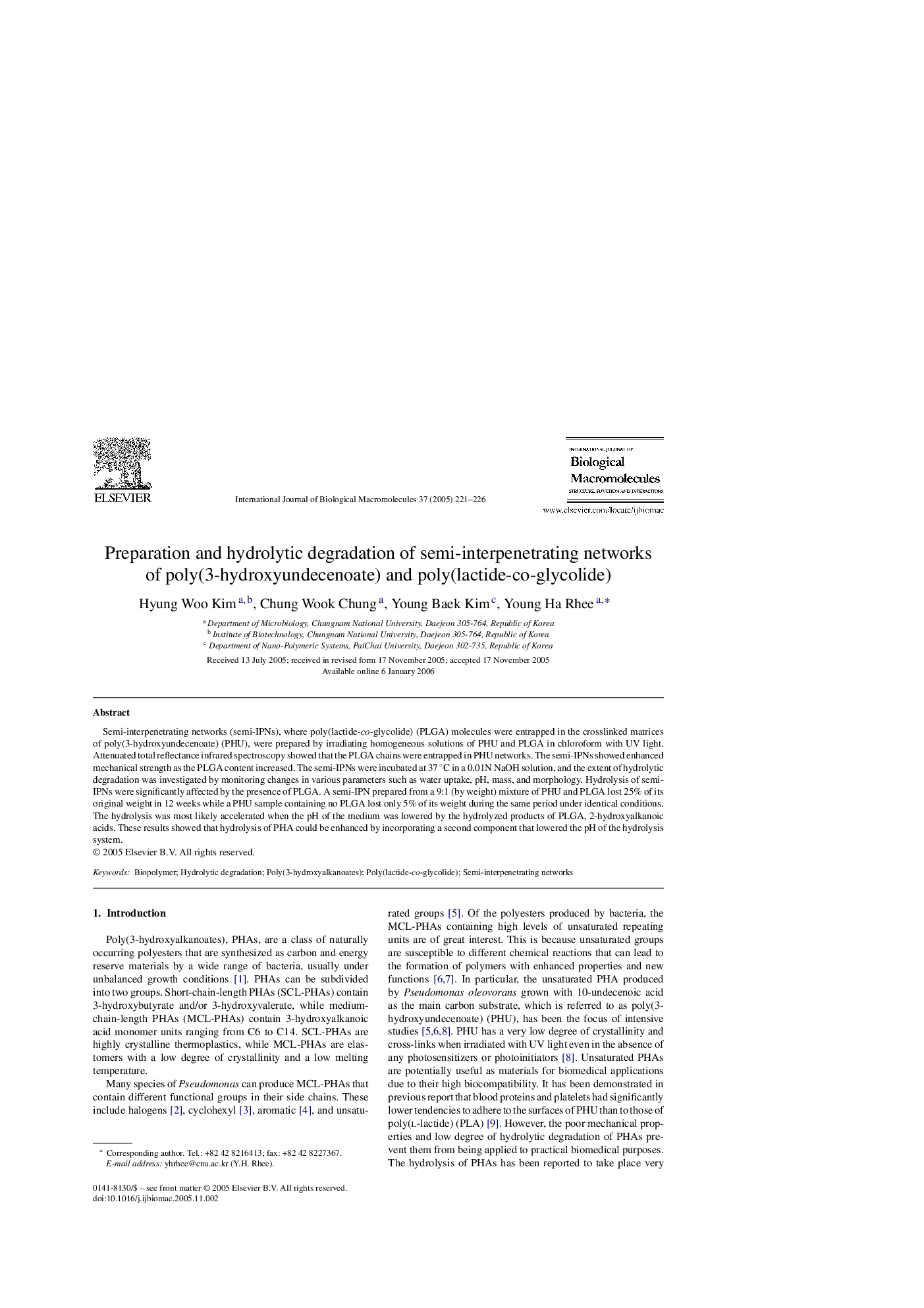| Article ID | Journal | Published Year | Pages | File Type |
|---|---|---|---|---|
| 9890810 | International Journal of Biological Macromolecules | 2005 | 6 Pages |
Abstract
Semi-interpenetrating networks (semi-IPNs), where poly(lactide-co-glycolide) (PLGA) molecules were entrapped in the crosslinked matrices of poly(3-hydroxyundecenoate) (PHU), were prepared by irradiating homogeneous solutions of PHU and PLGA in chloroform with UV light. Attenuated total reflectance infrared spectroscopy showed that the PLGA chains were entrapped in PHU networks. The semi-IPNs showed enhanced mechanical strength as the PLGA content increased. The semi-IPNs were incubated at 37 °C in a 0.01N NaOH solution, and the extent of hydrolytic degradation was investigated by monitoring changes in various parameters such as water uptake, pH, mass, and morphology. Hydrolysis of semi-IPNs were significantly affected by the presence of PLGA. A semi-IPN prepared from a 9:1 (by weight) mixture of PHU and PLGA lost 25% of its original weight in 12 weeks while a PHU sample containing no PLGA lost only 5% of its weight during the same period under identical conditions. The hydrolysis was most likely accelerated when the pH of the medium was lowered by the hydrolyzed products of PLGA, 2-hydroxyalkanoic acids. These results showed that hydrolysis of PHA could be enhanced by incorporating a second component that lowered the pH of the hydrolysis system.
Keywords
Related Topics
Life Sciences
Biochemistry, Genetics and Molecular Biology
Biochemistry
Authors
Hyung Woo Kim, Chung Wook Chung, Young Baek Kim, Young Ha Rhee,
